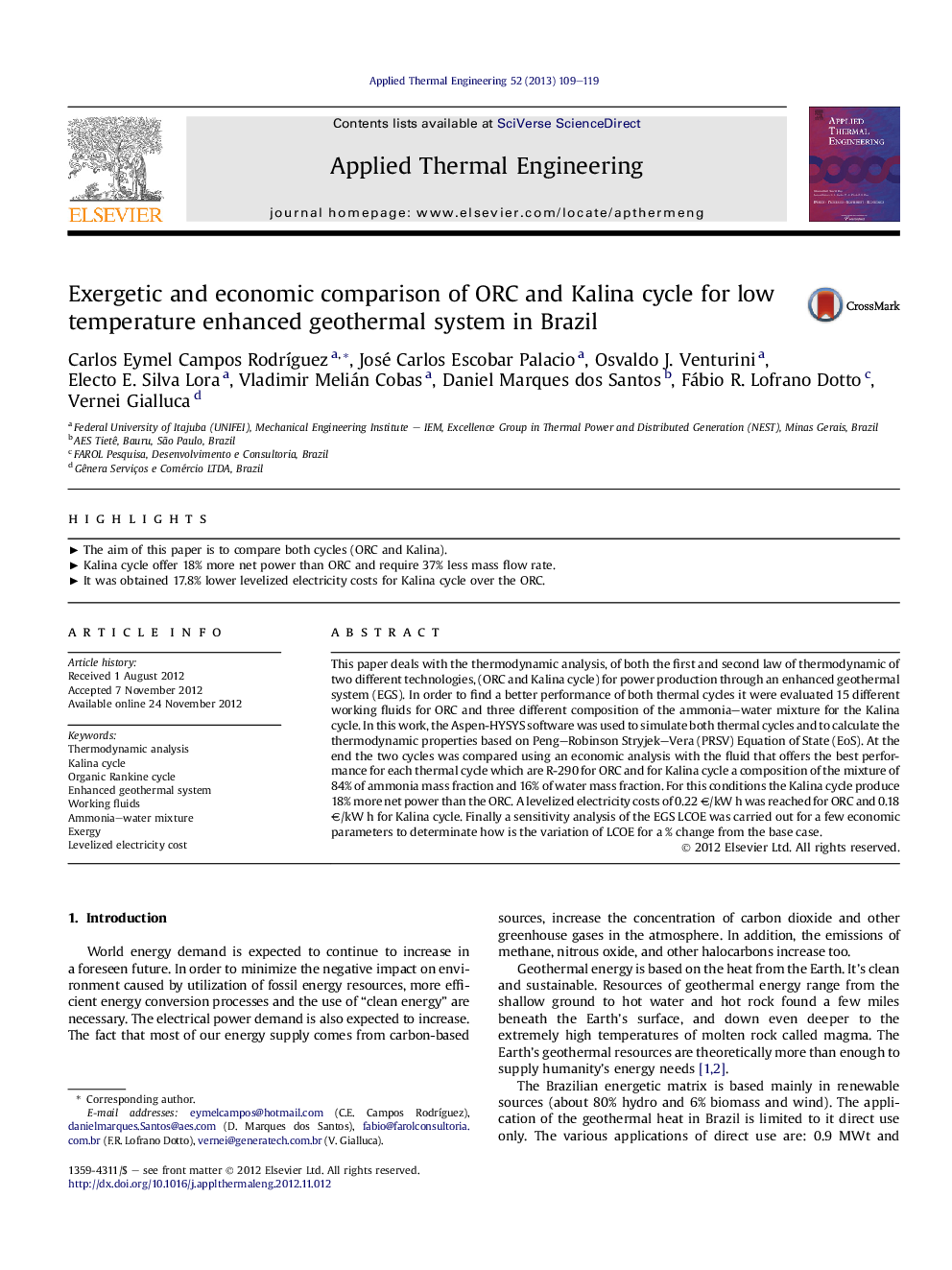| Article ID | Journal | Published Year | Pages | File Type |
|---|---|---|---|---|
| 647136 | Applied Thermal Engineering | 2013 | 11 Pages |
This paper deals with the thermodynamic analysis, of both the first and second law of thermodynamic of two different technologies, (ORC and Kalina cycle) for power production through an enhanced geothermal system (EGS). In order to find a better performance of both thermal cycles it were evaluated 15 different working fluids for ORC and three different composition of the ammonia–water mixture for the Kalina cycle. In this work, the Aspen-HYSYS software was used to simulate both thermal cycles and to calculate the thermodynamic properties based on Peng–Robinson Stryjek–Vera (PRSV) Equation of State (EoS). At the end the two cycles was compared using an economic analysis with the fluid that offers the best performance for each thermal cycle which are R-290 for ORC and for Kalina cycle a composition of the mixture of 84% of ammonia mass fraction and 16% of water mass fraction. For this conditions the Kalina cycle produce 18% more net power than the ORC. A levelized electricity costs of 0.22 €/kW h was reached for ORC and 0.18 €/kW h for Kalina cycle. Finally a sensitivity analysis of the EGS LCOE was carried out for a few economic parameters to determinate how is the variation of LCOE for a % change from the base case.
► The aim of this paper is to compare both cycles (ORC and Kalina). ► Kalina cycle offer 18% more net power than ORC and require 37% less mass flow rate. ► It was obtained 17.8% lower levelized electricity costs for Kalina cycle over the ORC.
